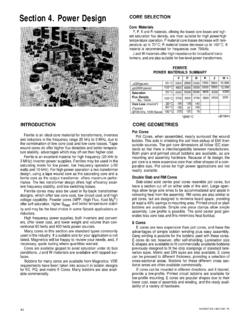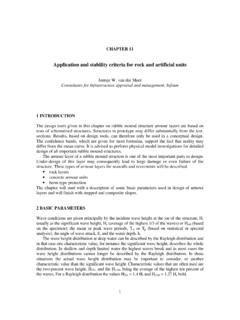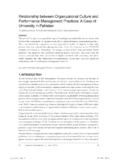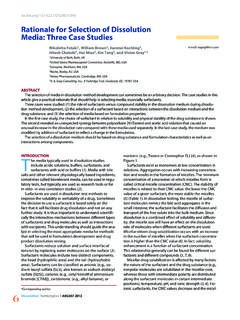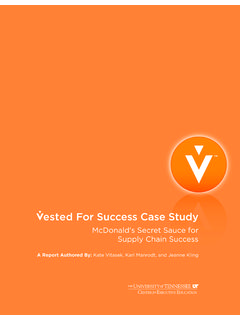Transcription of Lederman The myth of core stability - CPDO
1 CPDO Online Journal (2007) , June, p1-17. The Myth of core stability Professor Eyal Lederman CPDO Ltd., 15 Harberton Road, London N19 3JS, UK E-mail: Tel: 0044 207 263 8551 Introduction core stability (CS) arrived in the latter part of the 1990 s. It was largely derived from studies that demonstrated a change in onset timing of the trunk muscles in back injury and chronic lower back pain (CLBP) patients [1, 2]. The research in trunk control has been an important contribution to the understanding of neuromuscular reorganisation in back pain and injury. As long as four decades ago it was shown that motor strategies change in injury and pain [3]. The CS studies confirmed that such changes take place in the trunk muscles of patients who suffer from back injury and pain. However, these findings combined with general beliefs about the importance of abdominal muscles for a strong back and influences from Pilates have promoted several assumptions prevalent in CS training: 1 That certain muscles are more important for stabilisation of the spine, in particular transverses abdominis (TrA).
2 2 That weak abdominal muscles lead to back pain 3 That strengthening abdominal or trunk muscles can reduce back pain 4 That there is a unique group of core muscles working independently of other trunk muscles 5 That a strong core will prevent injury. 6 That there is a relationship between stability and back pain As a consequence of these assumptions, a whole industry grew out of these studies with gyms and clinics worldwide teaching the tummy tuck and trunk bracing exercise to athletes for prevention of injury and to patients as a cure for lower back pain [4, 5]. At that point core stability became a cult and TrA its mantra. In this article some of these basic assumption will be re-examined. In particular, it will examine: KEYWORDS core stability , transverses abdominis, chronic lower back and neuromuscular rehabilitation Abstract The principle of core stability has gained wide acceptance in training for prevention of injury and as a treatment modality for rehabilitation of various musculoskeletal conditions in particular the lower back.
3 There has been surprising little criticism of this approach up to date. This article will re-examine the original findings and the principles of core stability and how well they fare within the wider knowledge of motor control, prevention of injury and rehabilitation of neuromuscular and musculoskeletal systems following injury. 1 The role of TrA as a stabiliser and relation to back pain: is TrA that important for stabilisation? 2 The TrA timing issue: what are the timing differences between asymptomatic individuals and patients with LBP? Can timing change by CS exercise? 3 Abdominal muscle strength: what is the normal strength needed for daily activity? Can CS exercise affect strength? 4 Single muscle activation: can single muscle be selected? Does it have any functional meaning during movement? Assumptions about stability and the role of TrA muscle In essence the passive human spine is an unstable structure and therefore further stabilisation is provided by co-contraction of trunk muscles.
4 Erroneously, these muscles are often referred to in CS approach as the core muscles, assuming that there is a distinct group, with an anatomical and functional characteristics specifically designed to provide for the stability . One of the muscles in this group to have received much focus is TrA. It is widely believed that this muscle is the main anterior component of trunk stabilisation. It is now accepted that many different muscles of the trunk contribute to stability and that their stabilasing action may change according to varying tasks (see further discussion below). The TrA has several functions in the upright posture. Indeed stability , but this function is in synergy with every other muscle that makes up the abdominals wall and beyond [6-8]. It acts in controlling pressure in the abdominal cavity for vocalization, respiration, defecation, vomiting etc. [9]. TrA forms the posterior wall inguinal canal and where its valve-like function prevents the viscera from popping out through the canal [10].
5 How essential is TrA for spinal stabilisation? One way to asses this is to look at situations where the muscle is damaged or put under abnormal mechanical stress. Would this predispose the individual to lower back pain? According to Gray s Anatomy (36th edition 1980, page 555) TrA is absent or fused to the internal oblique muscle as a normal variation in some individuals. It would be interesting to see how these individuals stabilise their trunk and whether they suffer more back pain. Pregnancy is another state that raises some important questions about the role of TrA or any abdominal muscle in spinal stabilisation. During pregnancy the abdominal wall muscles undergo dramatic elongation, associated with force losses and inability to stabilise the pelvis against resistance [11, 12]. Indeed, in a study of pregnant women (n=318) they were shown to have lost the ability to perform sit-ups due to this extensive elongation and subsequent force losses [12].
6 Whereas all non-pregnant women could perform a sit-up, of pregnant women could not perform a single sit-up. However, there was no correlation between the sit-up performance and backache, the strength of abdominal muscle was not related to backache. Despite this, CS exercises are often prescribed as a method for retraining the abdominal muscles and ultimately as a treatment for LBP during pregnancy. There is little evidence that localized musculoskeletal mechanical issues, including spinal stability play a role in the development of LBP during pregnancy. Often sited predisposing factors are, for example, body mass index, a history of hypermobility and amenorrhea [13], low socioeconomic class, existence of previous LBP [14], posterior/fundal location of the placenta and a significant correlation between fetal weight and LBP with pain radiation [14]. It is surprising that such dramatic postural, mechanical and functional changes to the trunk and lumbar spine seem to have an insignificant role in the development of back pain during pregnancy.
7 Another interesting period for us concerning stabilisation is immediately after delivery. Postpartum, it would take the abdominal muscle about 4-6 weeks to reverse the length changes and undergo re-shortening. Rectus abdominus takes about 4 weeks postpartum to re-shorten, and it takes about 8 weeks for pelvic stability to normalize [11]. It would be expected that during this period there would be minimal spinal support / stabilisation from the slack abdominal muscles and their fascia. Would this increase the likelihood for back pain? In a recent study, the effects of a cognitive-behavioural approach were compared with standard physiotherapy on pelvic and lower back pain immediately after delivery [15]. An interesting aspect of this research was that out 869 pregnant women who were recruited for the study, 635 were excluded because of their spontaneous unaided recovery within a week of delivery.
8 This would have been during a period, well before the abdominal muscles had time to return to their pre-pregnancy length, strength or control [11]. Yet, this was a period when back pain was dramatically reduced. How can it be that back and pelvic pain is improving during a period of profound abdominal muscle inefficiency? Why does the spine not collapse? Has the relationship between abdominal muscles and spinal stability been over-emphasised? Another potential source of information on the relationship between altered abdominal muscle function and back pain is the literature on obesity. One would expect, as in pregnancy, the distention of the abdomen to disrupt the normal mechanics and control of the trunk muscle, including TrA. According to CS model this should result in an increased incidence of back pain among this group. Yet, epidemiological studies demonstrate weight gains and obesity are only weakly associated with lower back pain [16].
9 According to the CS model we should be seeing an epidemic of back pain in over-weight individuals. Another area that can shed light on control of stability and abdominal muscles is the study of abdominal muscles that have been damaged by surgery. Would such damage affect spinal stability or contribute to back pain? In breast reconstruction after mastectomy, one side of the rectus abdominis is used for reconstruction of the breast. Consequently, the patient is left with only one sided rectus abdominis and weakness of abdominal muscles. Such alteration in trunk biomechanics would also be expected to result in profound motor control changes. Despite all these changes there seems to be no relationship to back pain or impairment to the patient s functional / movement activities, measured up to several years after the operation [17, 18]. One area for further study would be that of subjects who have had inguinal hernia repair.
10 In this operation the TrA is known to be affected by the surgical procedure [19, 20]. Up to date there is no known epidemiological study linking such surgery and back pain (perhaps because it doesn t exist?). We can conclude from the above that healthy abdominal musculature can demonstrate dramatic physiological changes, such as during pregnancy, post-partum and obesity, with no detriment to spinal health. Similarly, damage to abdominal musculature does not seem to impair normal movement or contribute to LBP. The timing issue In one of the early studies it was demonstrated that during rapid arm / leg movement, the TrA in CLBP patients had delayed onset timing when compared with asymptomatic subjects [1, 2]. It was consequently assumed that the TrA, by means of its connection to the lumber fascia, is dominant in controlling spinal stability [8]. Therefore any weakness or lack of control of this muscle would spell trouble for the back.
